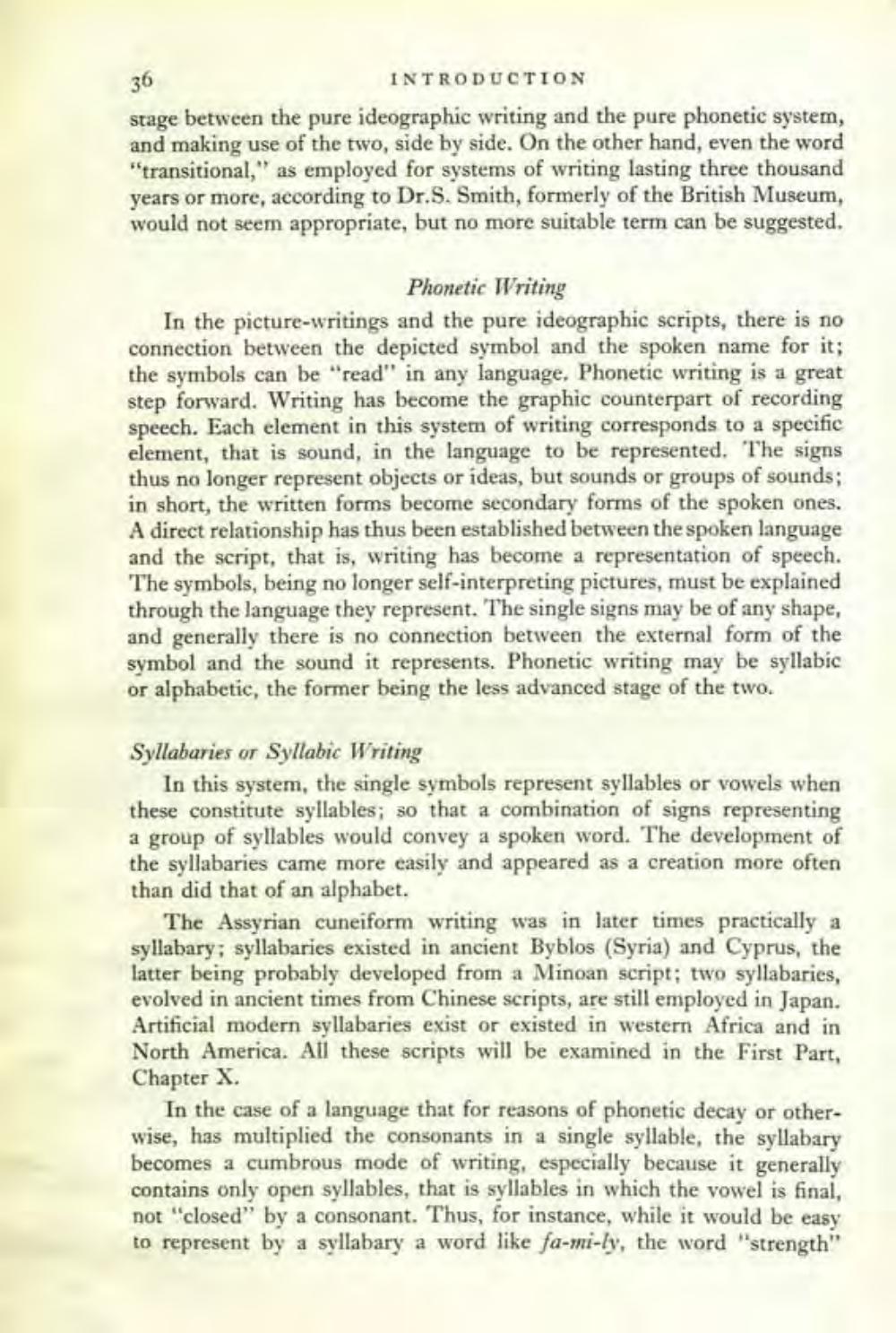________________
36
INTRODUCTION
stage between the pure ideographic writing and the pure phonetic system, and making use of the two, side by side. On the other hand, even the word "transitional," as employed for systems of writing lasting three thousand years or more, according to Dr.S. Smith, formerly of the British Museum, would not seem appropriate, but no more suitable term can be suggested.
Phonetic Writing
In the picture-writings and the pure ideographic scripts, there is no connection between the depicted symbol and the spoken name for it; the symbols can be "read" in any language, Phonetic writing is a great step forward. Writing has become the graphic counterpart of recording speech. Each element in this system of writing corresponds to a specific element, that is sound, in the language to be represented. The signs thus no longer represent objects or ideas, but sounds or groups of sounds; in short, the written forms become secondary forms of the spoken ones. A direct relationship has thus been established between the spoken language and the script, that is, writing has become a representation of speech. The symbols, being no longer self-interpreting pictures, must be explained through the language they represent. The single signs may be of any shape, and generally there is no connection between the external form of the symbol and the sound it represents. Phonetic writing may be syllabic or alphabetic, the former being the less advanced stage of the two.
Syllabaries or Syllabic Writing
In this system, the single symbols represent syllables or vowels when these constitute syllables; so that a combination of signs representing a group of syllables would convey a spoken word. The development of the syllabaries came more easily and appeared as a creation more often than did that of an alphabet.
The Assyrian cuneiform writing was in later times practically a syllabary; syllabaries existed in ancient Byblos (Syria) and Cyprus, the latter being probably developed from a Minoan script; two syllabaries, evolved in ancient times from Chinese scripts, are still employed in Japan. Artificial modern syllabaries exist or existed in western Africa and in North America. All these scripts will be examined in the First Part, Chapter X.
In the case of a language that for reasons of phonetic decay or otherwise, has multiplied the consonants in a single syllable, the syllabary becomes a cumbrous mode of writing, especially because it generally contains only open syllables, that is syllables in which the vowel is final, not "closed" by a consonant. Thus, for instance, while it would be easy to represent by a syllabary a word like fa-mi-ly, the word "strength"




